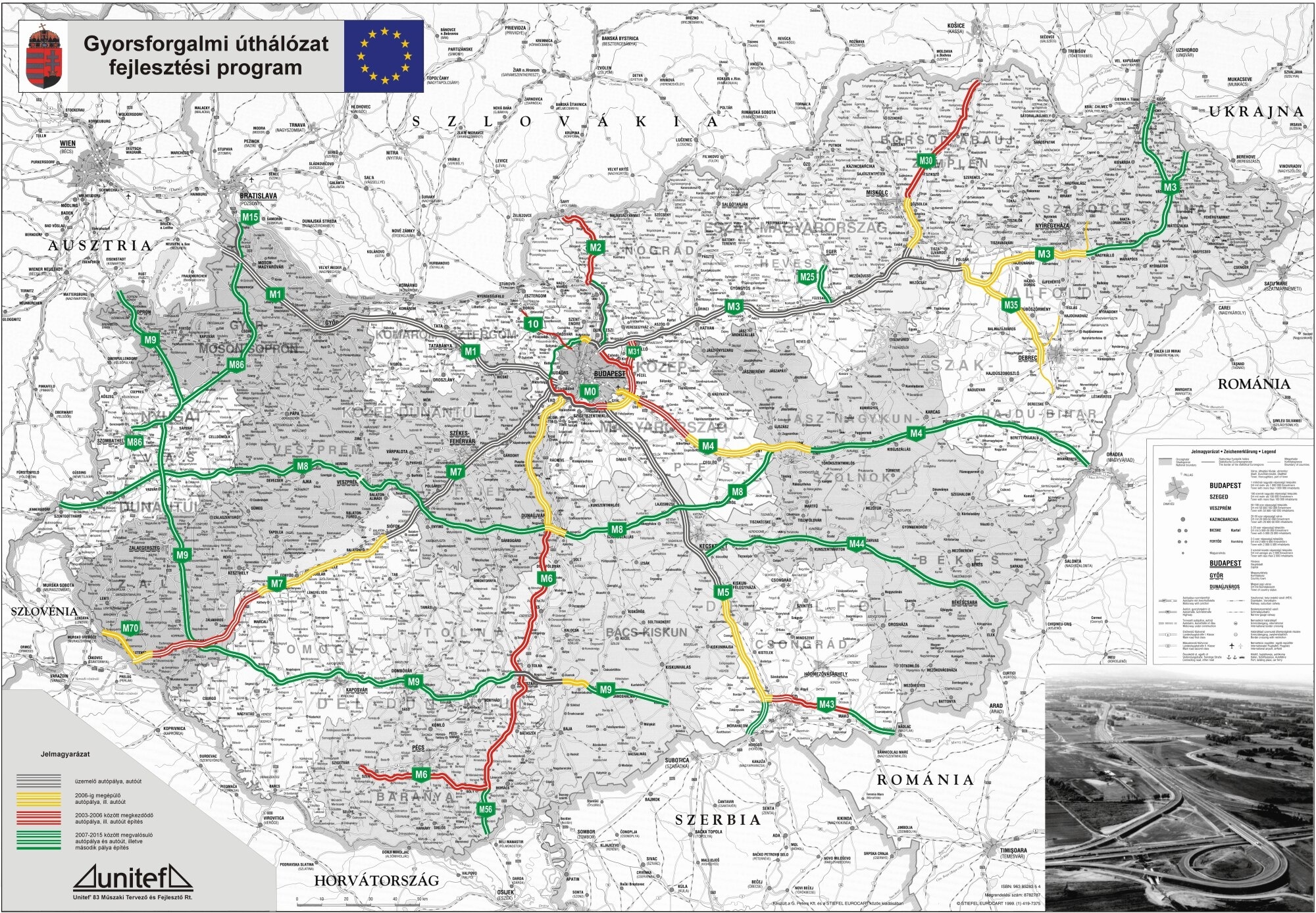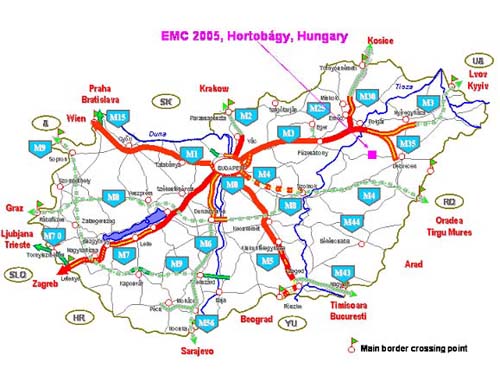Motorways in Hungary
- Existing highways and expressways
- In construction
- In planning
The motorway network in Hungary consists of several in all regions of Hungary extending from the capital Budapest routes.
The highways are designated with the letter M ( for " Magyar " and not for " Motorway " ) and a number. The Hungarian name for " highway " is autópálya. On the Hungarian motorways, there is a speed limit of 130 km / h and many routes are payable. There are exceptions to sections to larger cities, such Tatabánya and bypass Győr at M1, bypass Budapest: M0 and M31.
History
In 1964, the first motorway M7 Budapest was completed Balaton. Later, the building began to Tatabánya, to Győr and in the direction of Vienna.
The transport concept from 1968 was not created with a network of eight major roads. The community development concept from 1971 had the idea that the eight radial roads and the additional Sopron and North- Balaton street included next big ring elements developed: the M0 southern and eastern sectors of the Győr- Veszprém - Székesfehérvár - Dunaföldvár - Kecskemét - Szolnok (now Autópálya M8) and Eger "inner" ring, and each element is an " outer" ring, Sopron - Szombathely - Nagykanizsa - Balaton - Kaposvar - Pecs - Baja - Szeged Gyula - Berettyoujfalu - Debrecen - Nyíregyháza sections. By 1985, a total of 500 km of motorway should be built, but only 302 km were completed.
Significantly more highways to the opening of the borders were built. Hungary has a radial motorway network with the center of Budapest: M1; M2; M3; M4; M5; M6; M7 and an outer ring: M9.
Pécs got own M6 and M60 as European Capital of Culture. 2007, Romania became part of the European Union, and by the increased truck traffic came the new M43 motorway it. Plans are supplementary routes, which should connect the other major cities of the country.
Currently, the construction of the motorway sections under way that are most affected by European transit traffic. The goal is to improve the Hungarian and Central European car transport routes and the connection of industrial plants.
Bridges and viaducts
There are currently four highway bridges over the Danube, two in Budapest during the M0, one in Dunaújváros over the M8 and Szekszárd over the M9. Two bridges were built over the Tisza, at Polgár (M3 ) and Szeged ( M43), one is under construction in highway bypass Szolnok ( M4).
The longest viaduct there is on the south side of Lake Balaton, the Köröshegyerviadukt is 1870 m long and 79.70 m high. The M6 has four two- tube tunnel, including the Bátaszéktunnel with a length of 1331 m.
Survey
Gallery
M7 - Kőröshegyi viaduct at Lake Balaton
M8 - Pentele bridge at Dunaújváros
M70 - Koronger bridge
M7 - roundabout at Budaörs
Sources / Links
- Www.nif.hu - page about the progress of the motorway construction
Albania | Belgium | Bosnia and Herzegovina | Bulgaria | Denmark | Germany | Estonia | Finland | France | Greece | Ireland | Italy | Kosovo | Croatia | Latvia | Lithuania | Luxembourg | Macedonia | Montenegro | Netherlands | Norway | Austria | Poland | Portugal | Romania | Russia | Sweden | Switzerland | Serbia | Slovakia | Slovenia | Spain | Switzerland | Turkey | Belarus | Ukraine | Hungary | United Kingdom | Cyprus
• M 0 M 1 M • 2 • 3 • M • M 4 M 5 M 6 • • • M 7 M 8 M 9 • • • M 10 M 11 M 15 • • • M 19 M 21 M 25 • • M 30 • • M 31 M 34 M 35 • • • M 43 M 44 M 49 • • • M 51 M 60 M 70 • • • M 76 M 80 M 81 • • • M 85 M 86 M 87 •
- Motorway in Hungary
- List (roads )
- Road Traffic ( Europe)










